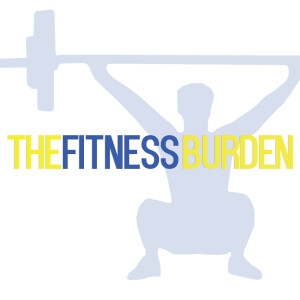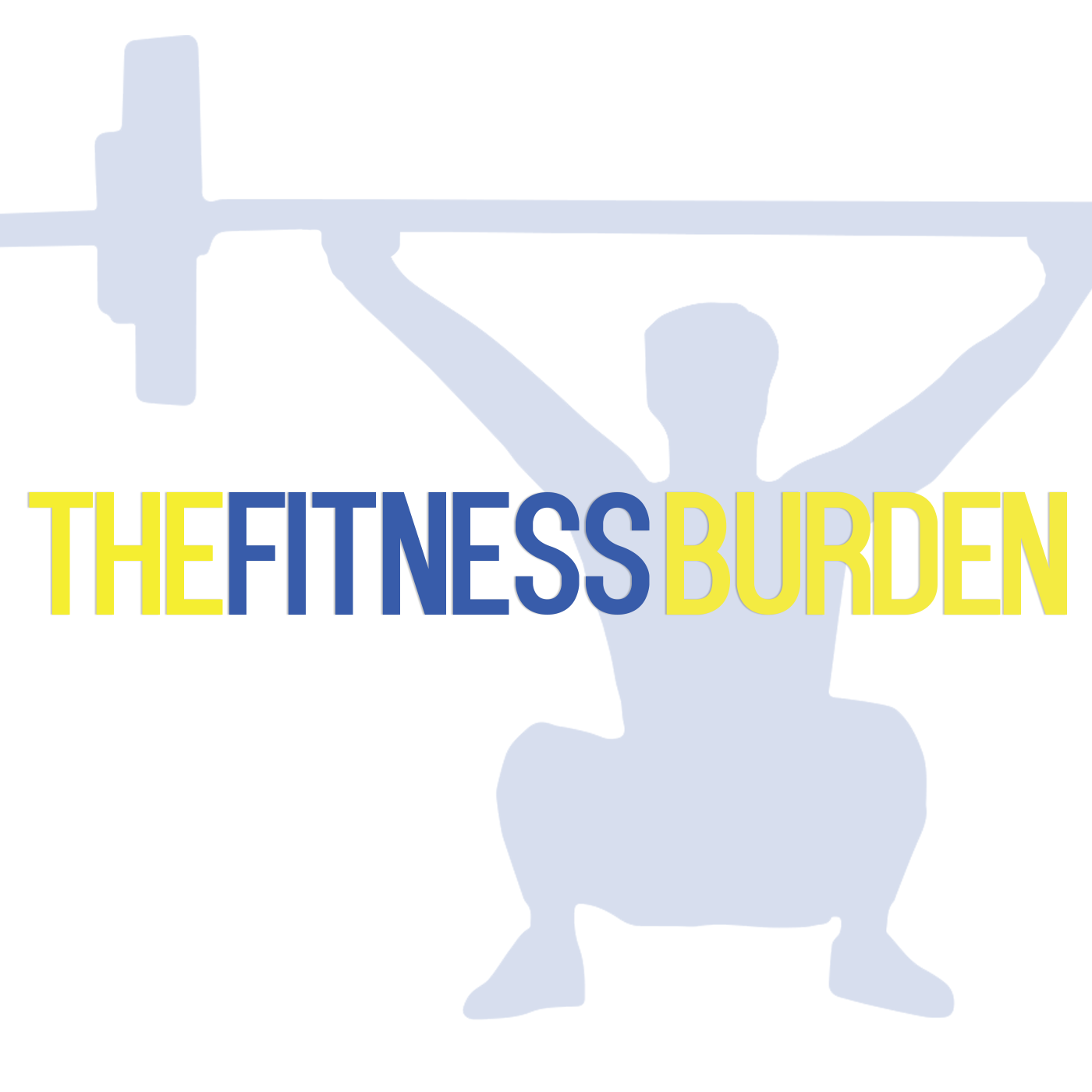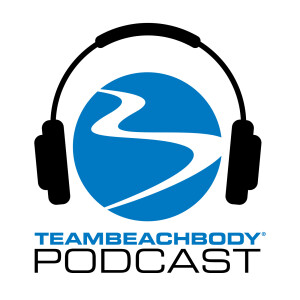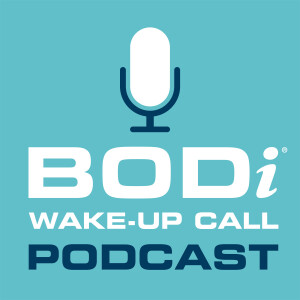

The Fitness Burden
https://sharetheburdencrossfit.libsyn.com/rssEpisode List

Episode 27 (Macros - The numerical science behind nutrition)
What are macros? Should I be tracking my macros? What are the advantages of tracking my macros? Is it hard to do?

Episode 26 (CrossFit Games Athlete - Kelley Jackson)
Body: Topic #1 - Brief introduction: Family, friends, passions other than CrossFit. Topic #2 - How did you get started with CrossFit? What is your favorite part about CrossFit? How long do you foresee yourself continuing CrossFit? Topic #4 - Anyone that trains as long and as hard as you has probably had to deal with injuries. How did you overcome those obstacles, and what advice would you give to someone who in currently dealing with one? Topic #3 - From an athlete's perspective, what does a typical day look like for you? Training? Programming? Nutrition? Mobility? Sleep? Start with when you wake up ;) Topic #4 - Outside CrossFit, what do you like to do for fun? Topic #5 - If there was one piece of advice you could give a new CrossFitter, what would it be? Topic #6 - What is your favorite book, and what is one book you would recommend that every athlete should read? They can be the same book. Topic #7 - Rapid fire round: silly, quirky off the cuff but appropriate questions. Topic #8 - Shout outs? Sponsors?

Episode 25 (Why do so many CrossFitters love Jesus?)
Body: Topic #1: Matthew 22:36-40 “Jesus replied, “Love the Lord your God with all your heart and with all your soul and will all your mind.” This is the first and greatest commandment. And the second is like it: “Love your neighbor as yourself.” CrossFit = Community Coaches want to help people. The best way to help people is to love them. Topic #2: Unlike any sport I’ve played, CrossFit focuses on growth of individuals as members of a community. Definition of CrossFit = “Relative intensity” means it is difficult for everyone, equally. A bench-warmer on the varsity football team, is still on the team, but they don’t get any playing time. Muscle-up = jumping pull-up Topic #3: Christians and CrossFitters are committed to a higher calling/goal. The Bible says Christians are too be a living testimony for God on earth. To be His hands and feet. True CrossFitters are merely interested in their own fitness, rather, they are committed to the fitness of others around them. Topic #4: Which famous CrossFitters are Christians? Jacob Heppner, Rich Froning, Dan Bailey, Chris Spealer, Lindsey Smith, Andrea Ager, and the list goes on and on. Topic #5: What is Share the Burden CrossFit’s Mission statement, and what do we represent?

Episode 24 (How to 10x Your Fitness)
Intro: Justin “Welcome to The Fitness Burden, I’m Justin Smiley with my Co-Host,” Brian “Brian Turek” Justin “On today’s episode we are going to” Body: The 4 Degrees of action: “The 10x Rule” by Grant Cardone Massive Thought or goals require massive action. Most people fail with both. Most people underestimate the amount of action it takes to achieve success and therefore rarely achieve it. Degree #1: Do nothing people: give up on their dreams, accep any result good or bad. Spend energy justifying why they aren’t doing anything. They have to spend a ton of time and creativity coming up with excuses. Degree #2: Retreat people: react instead of act. Action in reverse just to avoid something negative. Justify their response their responses. Keeps them ‘safe’. Don't be too ambitious, too focused, etc. Example: most marriages end in divorce. Retreat is an action. Degree #3: Normal action: middle class, mediocrity. It’s incredibly dangerous because most people consider it acceptable. Average heath, average career, average finances etc. The worst of the 4. Degree #4: children are born with the natural instinct to take massive action. It is society that tells them to be average and retreat. Massive action will actually produce new problems. Only unsuccessful people view massive action as unusual. Conclusion: - Justin “If you liked what you heard, please don’t forget to go over to iTunes or Stitcher and give us a 5-star rating and share us on your social media of choice.” - Brian “And leave us some feedback and comments about what you liked and what you would like us to discuss on future episodes.”

When your diet isn't cutting it - literally (Part 3)
“When your diet isn’t cutting it - literally.” (Part 3) Parts 1 and 2 of this podcast have addressed food logs, macronutrient timing, carb cycling, and intermittent fasting. If you have not yet listened to those, please press pause on this episode and go back to those episodes first, as part 3 only builds on the first 2. Assuming that you get optimal sleep, eat high quality fat, protein, and carbohydrates at the appropriate times during the day, and that you have normal thyroid and adrenal function, carb-cycling and intermittent fasting may still not be enough. In 2012, the federal government of the United States spent roughly $11 billion to subsidize and insure commodity crops like wheat, corn, and soybeans. In contrast, during that same year the federal government spent $1.6 to subsidize and insure specialty crops like fruits and vegetables. So, it shouldn’t surprise anyone, that according to macronutrient breakdown on myplate.gov ’s website, Americans should follow a diet that gets roughly 40% of its caloric intake from starchy carbohydrates. In a volatile commodities market, it makes economic sense to encourage farmers to produce goods that don’t spoil quickly and that don’t require refrigeration. Additionally, most of these crops can be used for more than just food. For example, corn and its derivatives can be found in everything from cereal to gasoline to batteries to baby diapers. Conversely, there are very few uses for grassed beef, other than feeding mammals that don’t eat grass. As a result, the S.A.D diet is one with a surplus of pre-processed, pre-packaged carbohydrates. We’ve been duped by the ad agencies and marketing departments of multinational corporations like KraftHeinz and General Mills. These food companies along with governmental organizations like the FDA have led us to believe that fat is the enemy. They suggest that if we eat a low-fat diet, that all of our health issues will disappear, but apparently they don’t reference the data. By systematically eliminating all fat from our diet, we open the door for a diet that is high in refined carbohydrates. Not only are these carbohydrates low in calories (1g carb = 4 calories & 1g fat = 9 calories), but they get digested and broken down into glucose which the body uses for energy or stores for a later use as fat. To makes things worse, Americans are becoming more sedentary than ever; which means, very few of those carbohydrates are getting used as metabolic fuel and most of them are getting stored as fat. This is why a low-fat diet does not work. So what is the correct alternative? A ketogenic diet. Ketones are water-soluable fat molecules that are produced in the liver in an absence of carbohydrates. This alternative source of fuel can pass the blood-brain barrier, and they can be used by the body and brain as an alternative, and arguably superior, form of energy. Prior to the agricultural and industrial revolutions, humans relied heavily on ketosis. In fact, without it, our species would be extinct. Before our ancestors had McDonald’s, Travel Marts, and Walmarts, we had to hunt, gather, or farm our food. When times were tough, we would often go for days between meals. We were forced by nature, to rely on a very basic process. We would use stored fat as fuel. Now, you tell me. Does this sound like something you would like to do? Use your stored bodyfat deposits as fuel? Translated, this means that you can actually use that spare tire around your midsection to get rid of the spare tire around your midsection. If the human body, can naturally enter a fat-burning state in an absence of carbohydrates, it would make sense that a society that eats too many carbohydrates would have an obesity problem. Because Americans eat too many carbohydrates, their bodies are never forced to use the fat they store up as fuel, and their fat stores continue to increase, just like their waste lines. But surely, a government that wants to provide affordable healthcare to all of its citizens would care about the health of its citizens, right? Remember those subsides I mentioned earlier, and do you remember the macronutrient breakdown on myplate.gov? What does a Ketogenic diet look like? Definitions vary, and unfortunately, because of the bodybuilding community, many people think a ketogenic diet is a diet void of carbohydrates and fat, but that is not the case. In order for the human body to effectively use ketones for fuel, it must also have a sustainable source of fat. A ketogenic diet is high in Coconut and or MTC oil, healthy grassfed meats, grassfed butter, nuts, and seeds. Yes, the body can enter a state of ketosis without a regular source of healthy fat, but it isn’t sustainable for longer periods of time, and it definitely is not good for people who are looking to improve their fitness performance. A ketogenic diet is the exact opposite of the S.A.D or Standard American Diet, and that should be enough reason to give this new lifestyle a try. 60% of Americans are overweight and or obese, and the problem is now affecting our children. So, one could argue that a drastic nutritional shift from the preprocessed, prepackaged, carbohydrate eating habits of most Americans, would be a smart move.
Create Your Podcast In Minutes
- Full-featured podcast site
- Unlimited storage and bandwidth
- Comprehensive podcast stats
- Distribute to Apple Podcasts, Spotify, and more
- Make money with your podcast












